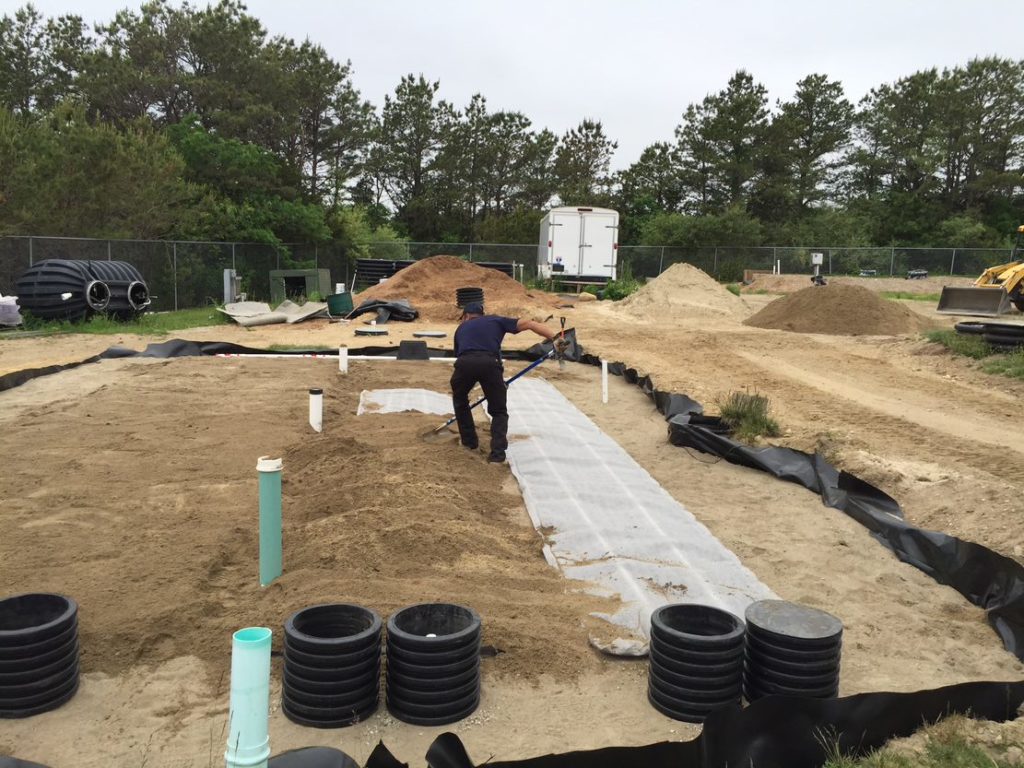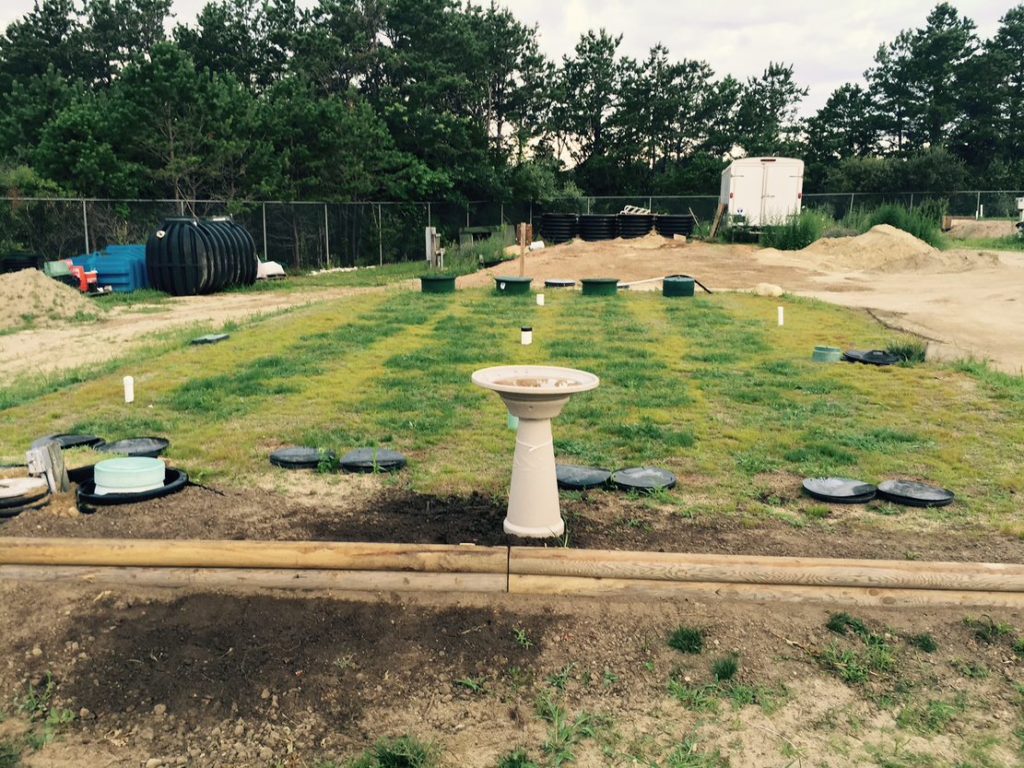Project Description

The “silt system” was derived from a modification of the work of Dr. Will Robertson and others from the University of Waterloo (Robertson et al. 2000). This project showed that the layering of organic matter below nitrifying zones of a wastewater soil treatment unit (STU – also commonly known as a leachfield) removed nitrogen. The MASSTC system couples this idea with previous work at MASSTC that found that the removal of pharmaceuticals and personal care products could be enhanced by using shallow-placed, low pressure-dosed soil absorption systems.
For nitrogen removal, Dr. Robertson’s work layered organic matter including a silty material matrix for the purpose of maintaining moisture (hence a higher degree of saturation that results in less oxygen), to provide the anoxic conditions necessary for denitrification. Accordingly, in the MASSTC design, we mixed ASTM C-33 sand with discarded silt obtained from an aggregate washing facility. The combination resulted in approximately a 10% mix by volume of silt with the sand. With that, we then blended a pine sawdust obtained from a milling operation at the rate of 10% by volume.

All mixing was done on-site using an excavator along with a small front-end loader. The system is provided septic tank effluent (STE) at the approximate hydraulic loading rate of 0.6 gallons a day per square foot (0.6 gpd/sq. ft). The shallow dispersal of STE is achieved using GeoMat® (Geomatrix LLC, Old Saybrook, Connecticut), but we believe any low-pressure dispersal network design will achieve the same results.
The system was installed in July 2015 and has been in continuous operation since then.
Sampling under a system such as this in the field can be accomplished by using pan lysimeters explained elsewhere on this website. For simplicity, we present here the results obtained from beneath the entire system, since in the Test Center venue, all of our STU are underdrained for purpose of collecting all that passes through the systems.
